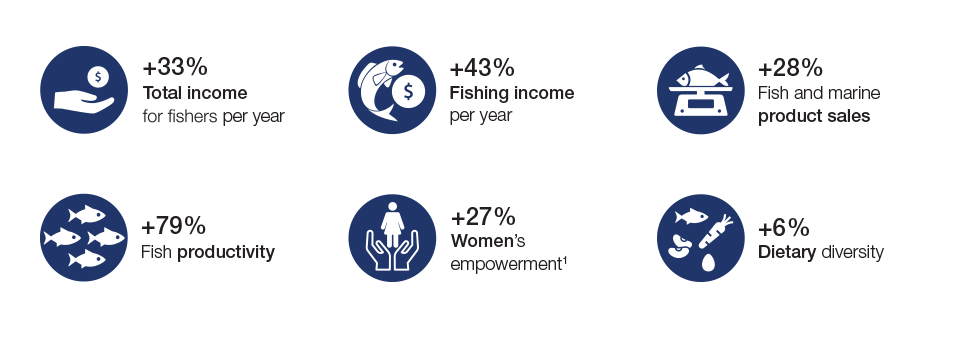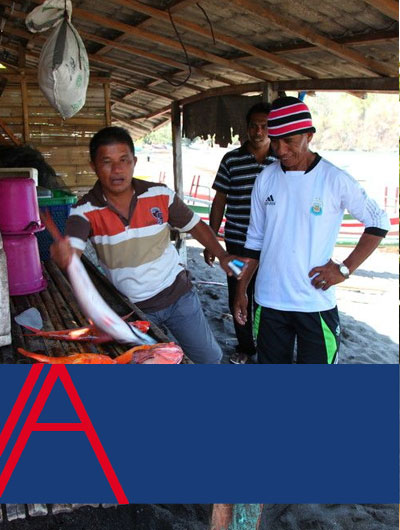Impact assessment: The Coastal Community Development (CCDP)
Impact assessment: The Coastal Community Development (CCDP)
The Coastal Community Development Project (CCDP), implemented between 2013 and 2017, was designed to reduce poverty and achieve sustainable economic growth in 12 coastal districts of Indonesia.
The project took a comprehensive approach, combining sustainable marine and coastal natural resource management with economic and livelihood development in coastal and small island communities where poverty was endemic. It invested in fisheries, aquaculture, and related marketing and support structures. Project participants were provided with fishing gear and motorized engines for their fishing boats, enabling them to fish further from the coast, and thus catch a more diverse array of higher-value fish. They were linked to profitable markets, and fish processing groups were established that primarily enabled local women to process and market fish. Infrastructure groups were created to construct village information centers, fish smokehouses, processing warehouses and marketplaces. Additionally, the project provided cooler boxes to store fresh fish and reduce post-harvest losses. It also offered support for food-safety certification. Steps were taken to improve the governance and management of marine resources, including through village-based integrated coastal management plans and the designation of marine protection areas.
An impact assessment of CCDP was conducted in 2018. The assessment used a mixed-methods approach that combined quantitative household-level and community-level surveys and a qualitative survey (focus groups discussions and key informant interviews).
Key impact estimates
An impact estimate is calculated as the difference in mean outcomes between the treatment groups (project participants) and the comparison group (non-participants).
The impact assessment showed unequivocally that as a result of CCDP activities, fish productivity and sales improved markedly, thus increasing the income of project participants from fishing. The project's community-based interventions to improve coastal resource management meant that fishers were able to catch more and larger-sized fish, in addition to a more diverse set of higher value fish. Results include:
The evidence from this impact assessment generated a number of lessons that can inform future project design, as well as country strategies and policies:
- Coupling strengthening of technical capacity of fishes with investment in improved fishing gear, infrastructure and inputs increases fishing productivity.
- Integrating sustainable coastal resource management with efforts to increase fish productivity can make the economic benefits from fishing sustainable.
- Marketing support proved to be a lynchpin. For example, engaging women in processing and marketing of fish products led to their empowerment.
- Integrating sustainable coastal resources governance and management is crucial as it not only helps increase fishing productivity and value of fish sales, but also ensures environmental sustainability.
- Investing in employment opportunities in non-fishing activities, especially in the services sector, should be considered as alternative and complementary in contexts where rural and structural transformation have taken root.
